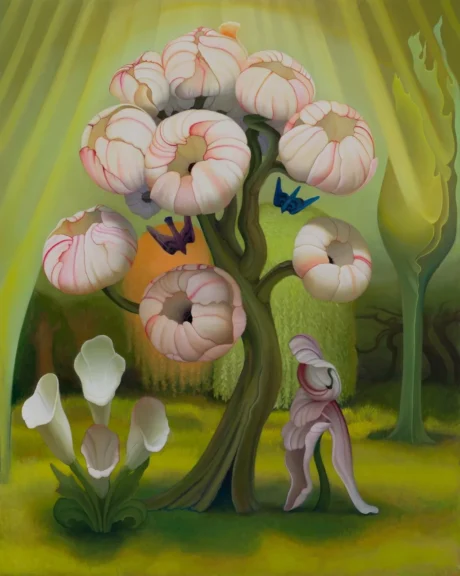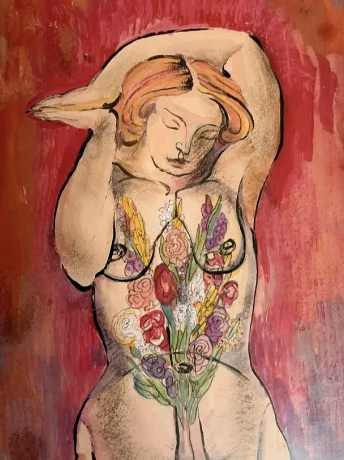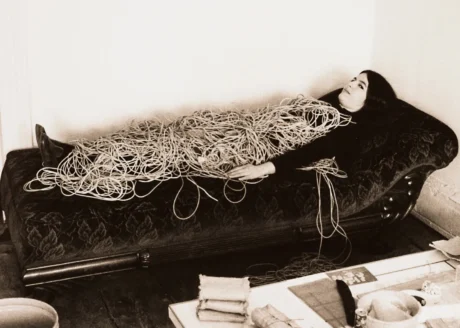Between painting and photography, the studio and the bedroom, Alice Neel and Peter Hujar capture the nuances of queer community in vivid detail — not as a fixed, idealised whole, but as a fluid and sometimes fleeting mesh of connections. Sam Moore reflects on the shared themes and distinct approaches of the two artists’ portraits.
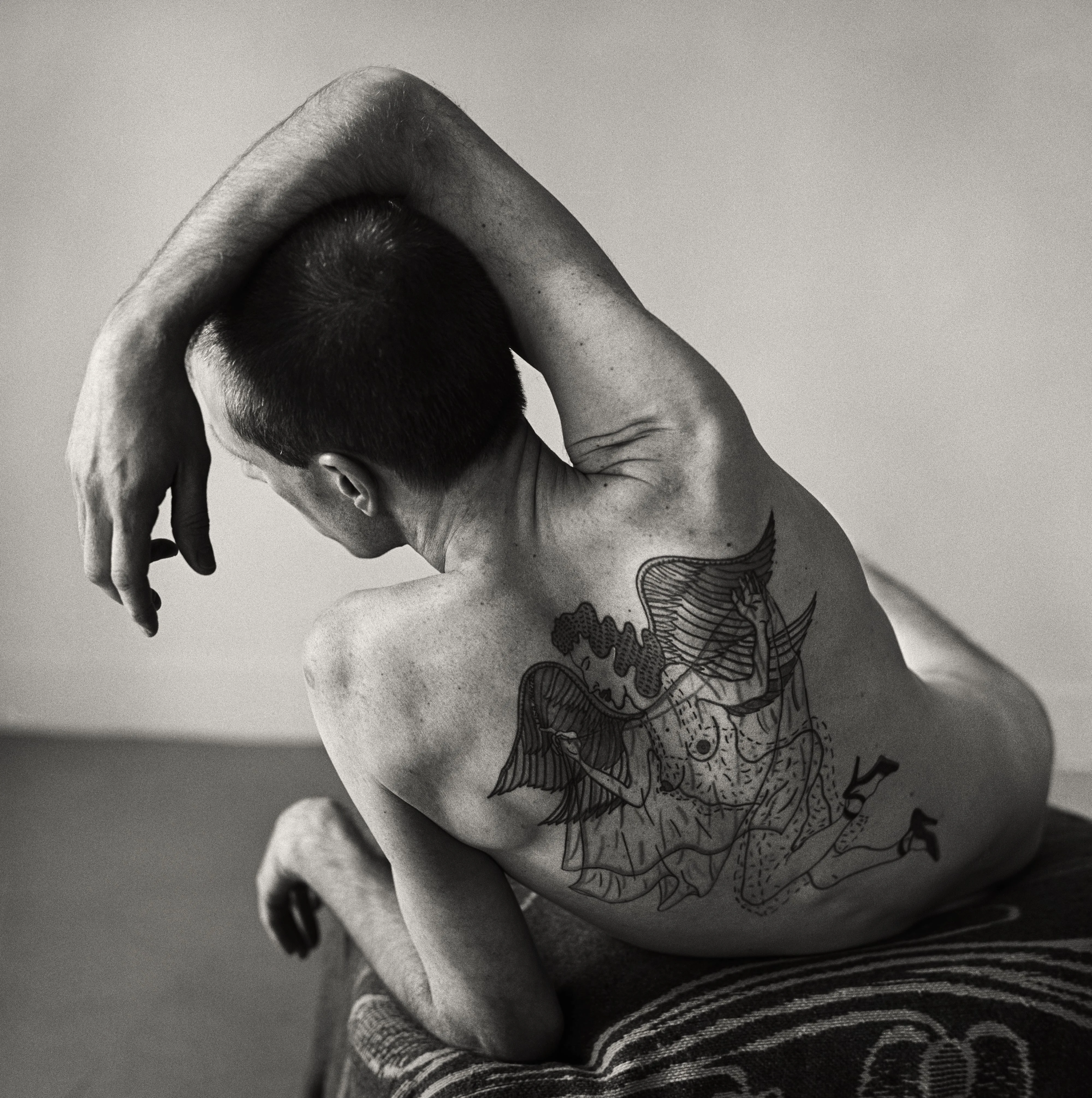
Two meanings are associated with the word utopia, which Thomas Moore took pains to draw similarities between in his eponymous sixteenth-century political text. The literal translation of the word is “no place,” but the term is so close to eutopia (drawing on the Ancient Greek for “good”) that their pronunciations are the same. In modern usage, we’ve favoured the latter; the idea of a utopia as something better than our current world, one that we might even attain somehow, someday. But this definition will always live in the shadow of the literal translation, the impossibility of this kind of society.
It’s in this tension—between that which we might wish to attain and that which will always lie just beyond our reach—that the queer communities immortalised in the art of Alice Neel and Peter Hujar come to life. It’s striking that both artists rarely show their subjects in the context of the wider world; they’re often depicted in a photographer’s studio, in the middle of a performance, or in their own private space in which queerness is not only safe, but celebrated. It’s in these contexts that the artists seemed able to capture the multitudes of their subjects, as Mary Garrard wrote in an essay which recounts her time sitting for Neel: “I could not imagine a portrait that would not falsify at least half of my identity.”
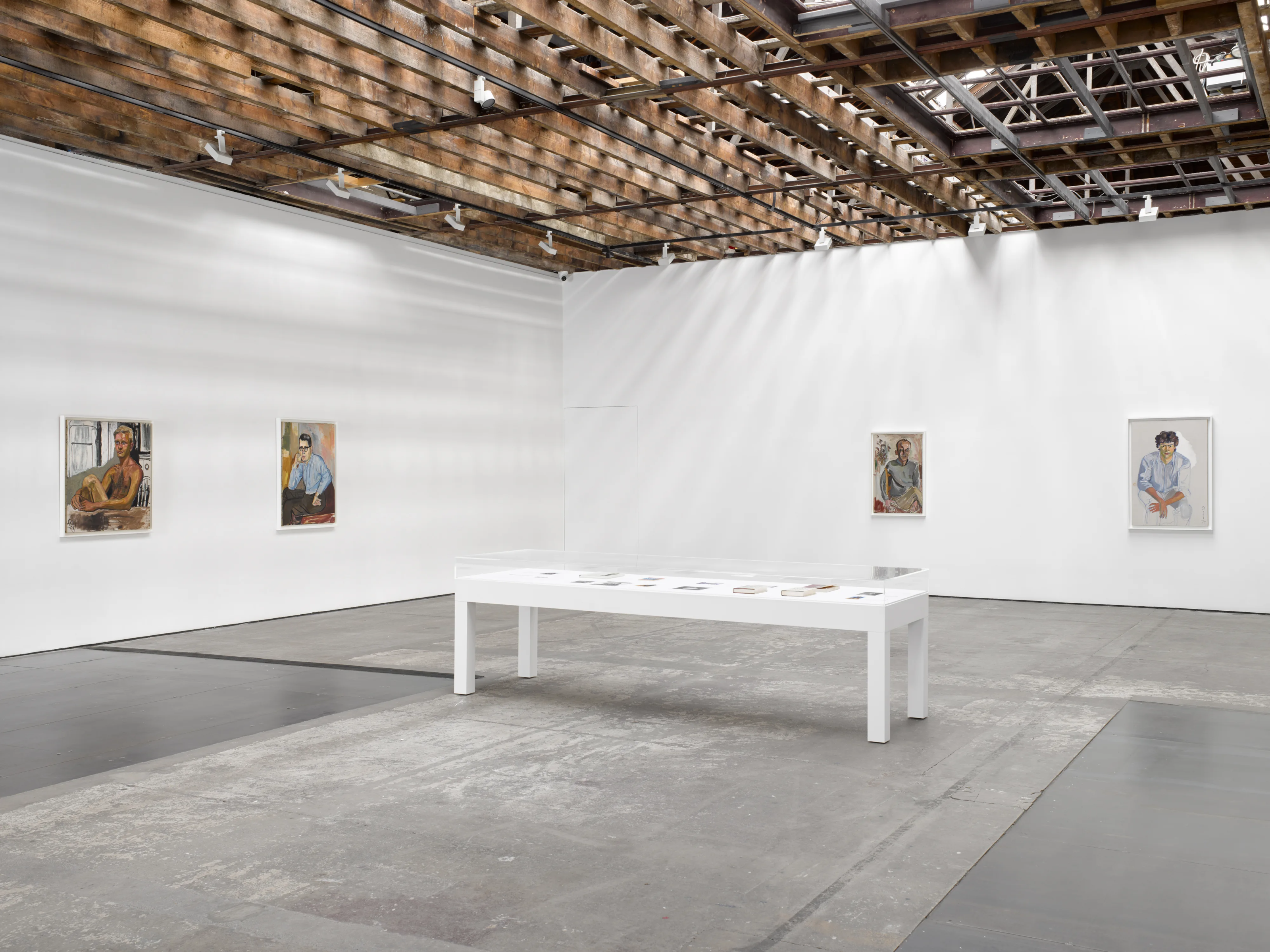
At first glance, there’s a simplicity to Neel’s paintings; while they might depict figures that have become vital in our understanding of queer art and history, Neel presents them in ways that are notably stripped back. Her subjects seem more like friends or members of a community than the poets, writers, or performance artists we associate their names with—like Adrienne Rich and Frank O’Hara, who feature in At Home: Alice Neel in the Queer World, an exhibition at Victoria Miro curated by Hilton Als. Neel offers a community that exists through the people, rather than their art.
How we might define these communities is challenging, especially in the context of queer history. Although he might not have set out to document it, Hujar’s work will always exist under the shadow of the AIDS crisis; his retrospective at Raven Row, Eyes Open in the Dark, includes photographs taken by David Wojnarowicz of Hujar on his deathbed. He passed away from AIDS-related pneumonia. In a way, we become forced to define the community through the fragments it has left behind. Paintings and photographs are always more permanent than the subjects themselves.

Among the ephemera that surrounds Neel’s At Home exhibition is a photograph of the 60 Warren Street loft where Catherine Saalfield, painted by Neel, lived. Also present in the photograph is the exhibition’s curator, Hilton Als; a great deal of our understanding of queer community emerges in such moments of happenstance, shaped as much by conscious influence and active excavation as by unconscious memory. It is the latter that informed Neel’s painting of Beat poet Allen Ginsberg, as she captures a memory of him mid-performance, legs crossed and mouth agape; Neel’s vision of the poet is that of a man in the midst of a vision himself. Surrounded by candles and smoke, the background of the image could be Ginsberg’s thoughts coming to life around him, a monstrous comic-book thought bubble. By reanimating him from memory, rather than having him sit for a more traditional portrait, Neel allows the poet to occupy an almost magical, iconic position.
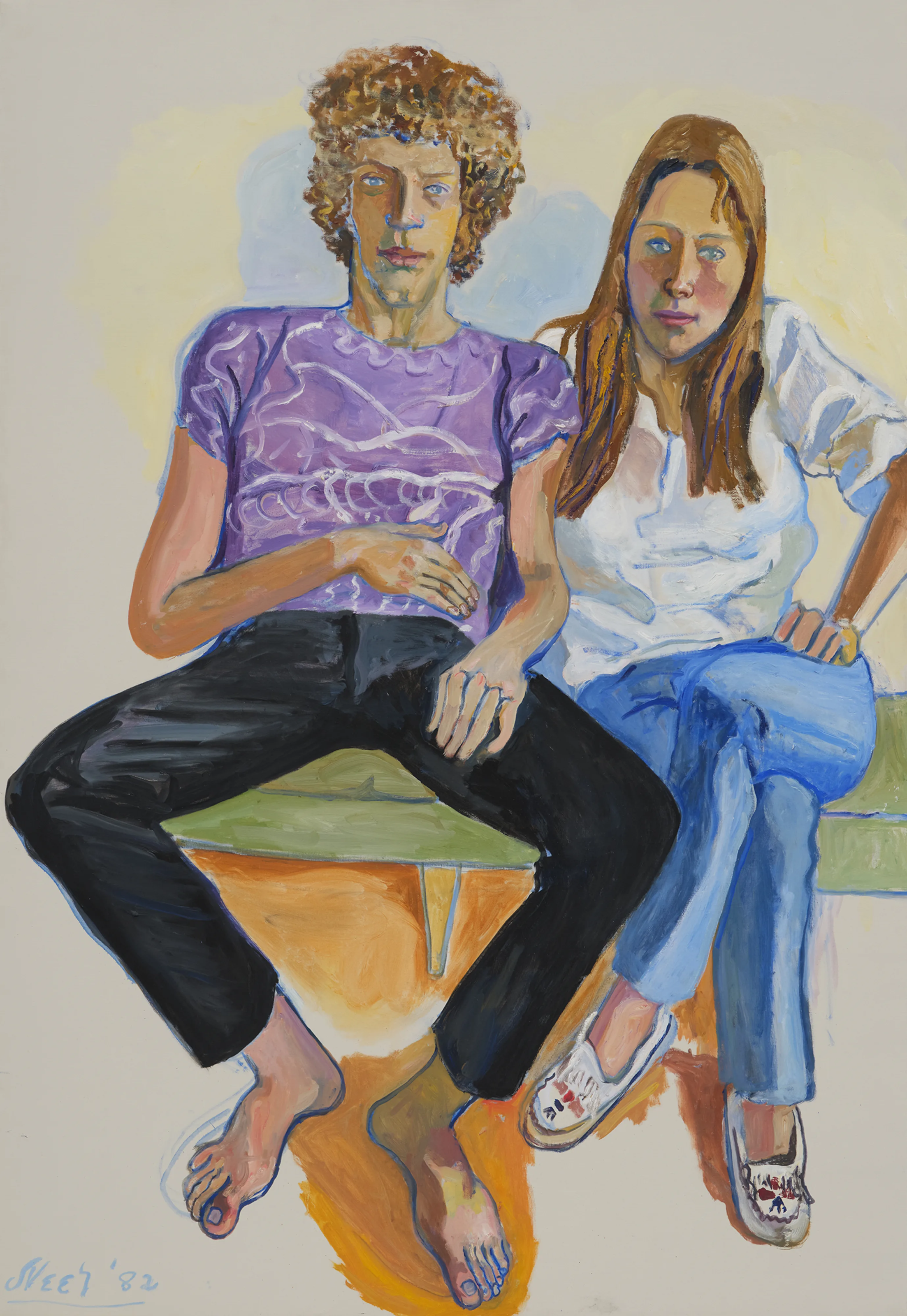
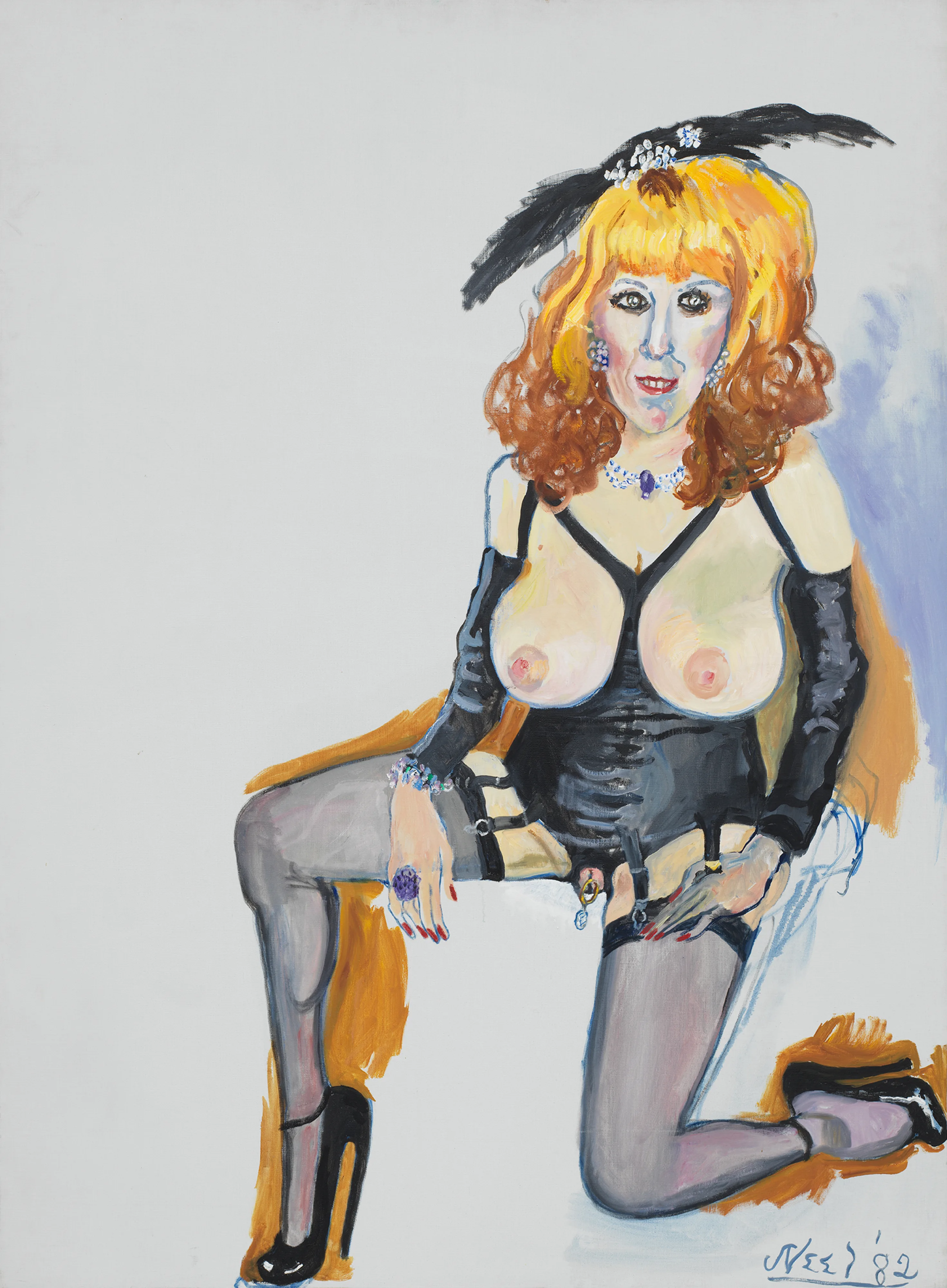
This painting of Ginsberg is the only piece in At Home that departs from an overtly realistic style. The background in Neel’s painting is often impressionistic, entirely bare; in her portrait of the performance artist Annie Sprinkle, she pulls the focus entirely on Sprinkle with no background at all. Hujar’s photographic process is similar. Stripping away props or backgrounds, his photos offer up his subjects with an almost disarming frankness—whether in the languid eroticism of his photos of a reclining David Wojnarowicz, or the guileless, almost dandy William Burroughs, worlds away from how his biography might imagine him.
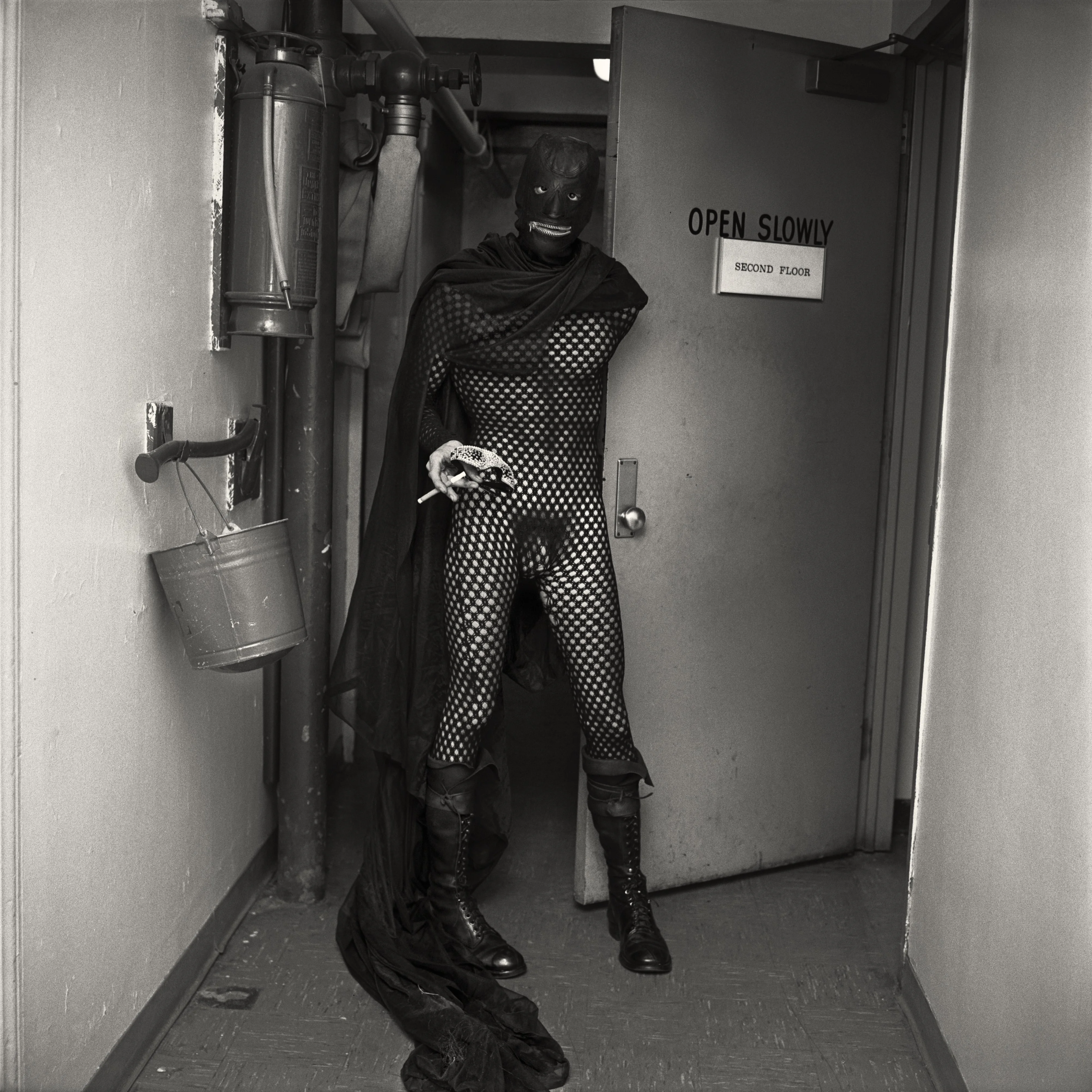
There’s a similar approach in Neel’s paintings, a kind of demystifying of these figures; in her painting of Frank O’Hara, Neel emphasizes the idiosyncrasies of his face: the freckles on the poet’s forehead, his teeth when he smiles (which Neel would later describe as “like tombstones”). It might be tempting to use words like “objective” to describe Neel’s paintings, but that doesn’t do their complexities justice. Neel instead draws on the details of her subjects, allowing them to appear as singular, only ever themselves. A speck of red appears on the upper lip of Neel’s painting of Martin Jay, perhaps a cut from his razor. One can easily picture him standing before his reflection in a bathroom mirror, carefully shaving in preparation for his portrait.
Neel’s images carry with them a fluidity that makes finding easy definitions a challenge, and trying to make sense of community in her work is equally complex; it is collection of individuals and the transient intersections of their lives rather than a conscious portrait of an entire group. This fluidity is most clear in Neel’s drawings; something in them captures movement and a kind of willing incompleteness. Her drawing of Adrienne Rich is casual not only in how it presents the poet, but also in Neel’s approach, what she chooses to shade and keep unshaded, as if Rich’s self were in flux even as she sat for this image.
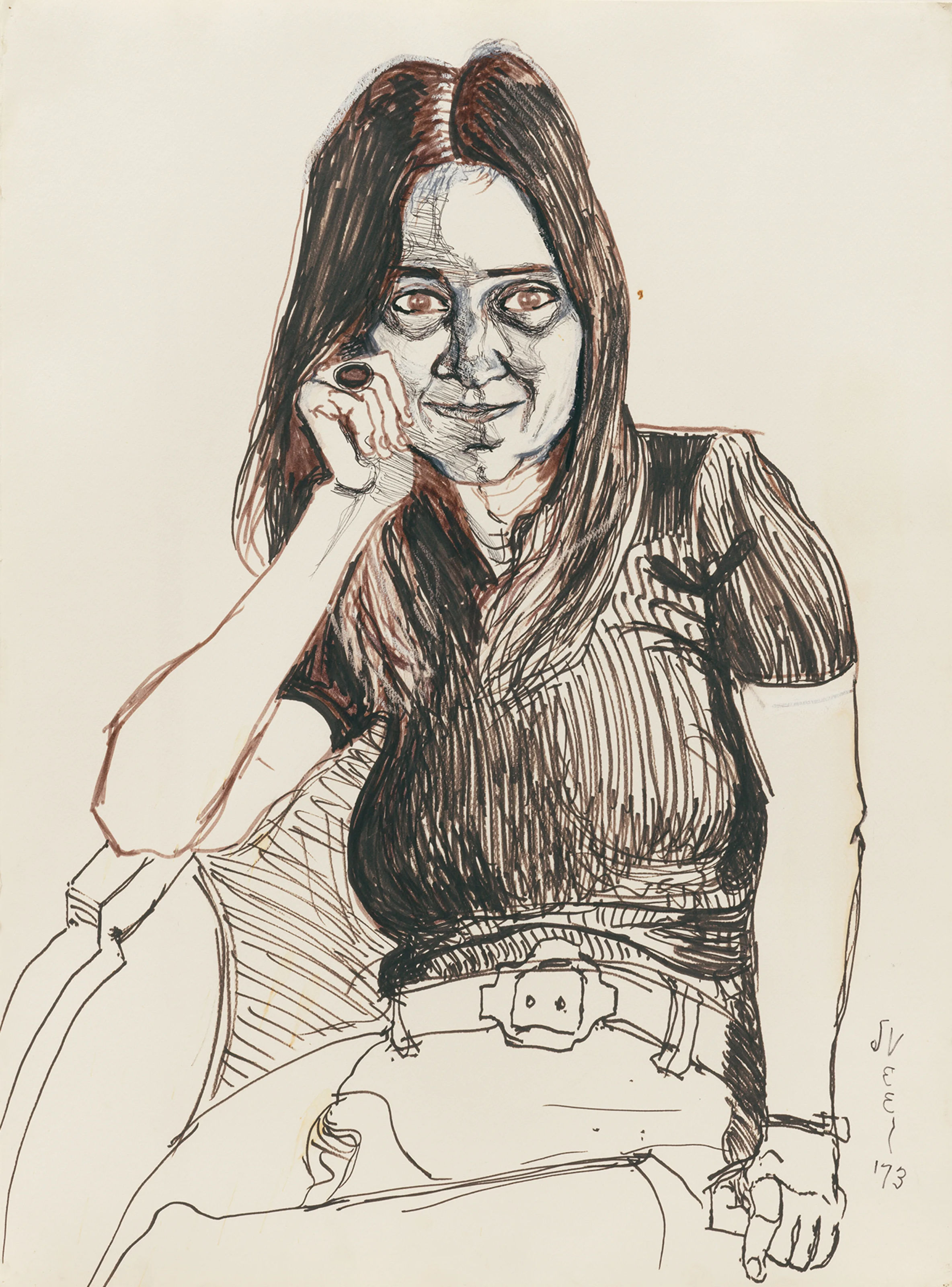
Where Neel offers us subjects and worlds that are fluid, still coming into themselves—her painting of art dealer and gallerist John Cheim is also striking for the details left unfinished—Hujar instead presents people and places that are frozen in time. This may partly be a result of a different medium—there’s a more pronounced fluidity in painting or drawing than photography, which is more defined by stillness—though beyond this, the way that Hujar frames and captures his subjects carries a certain weight. His portraits often feature his subjects lying down, inviting us to think about sleep, or even death. His photograph of Fran Lebowitz in bed, covered only by a sheet, offers an idea of the writer beyond what her work alone might tell us. While both Hujar and Neel present their subjects like this, there’s something more surprising in Hujar’s work, in the stillness and certainty of the photographs that still manage to subvert expectations.

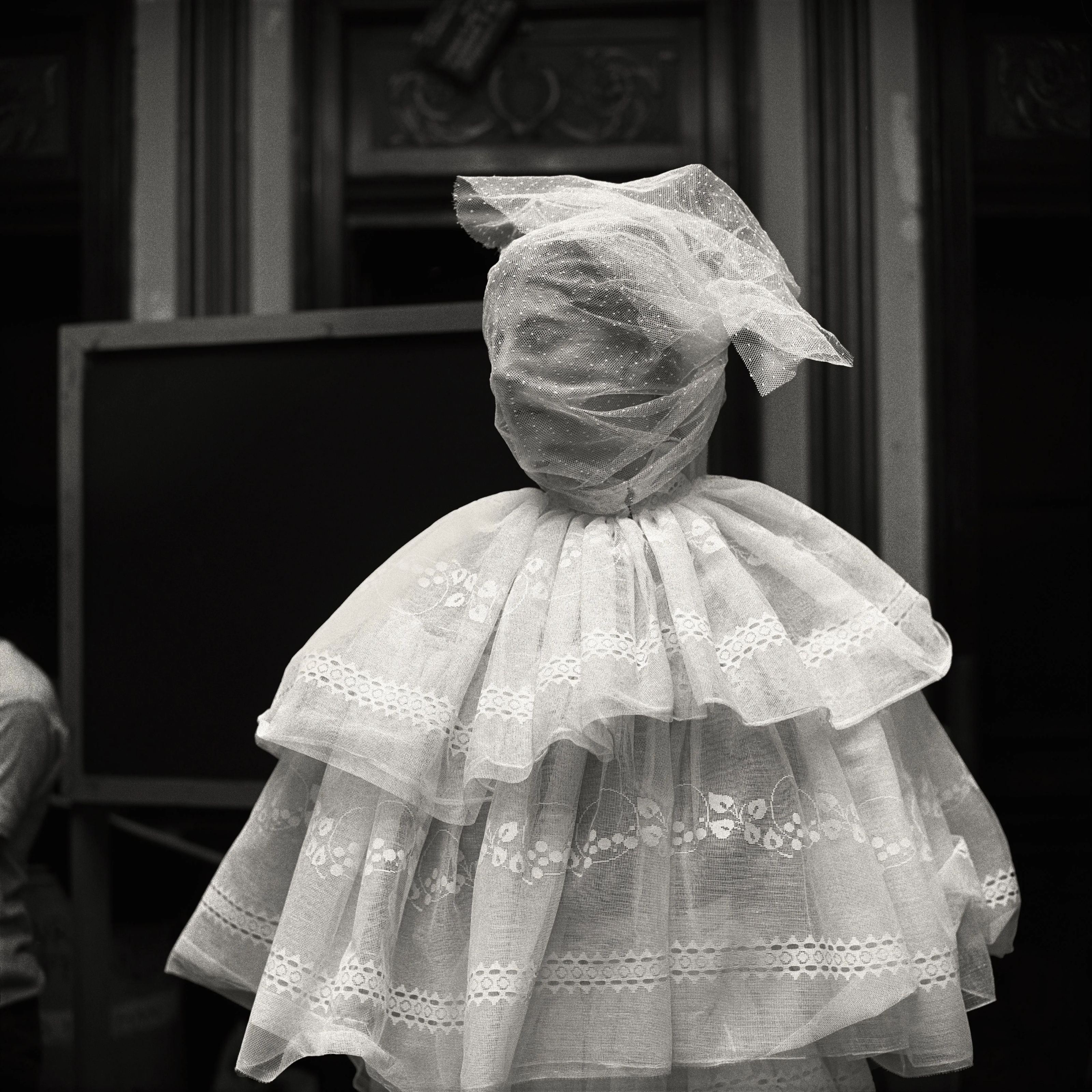
Community clearly exists for both Neel and Hujar, given the ways their art documents and immortalises their friends and contemporaries—but the idea of how each artist might define community is more difficult to settle on. If anything, the term becomes something of a feedback loop; a community is created by each artist based on the subjects in their art, and the subjects of that art then form a community. This becomes clearer when looking beyond the work on display at Neel and Hujar’s respective retrospectives: the photo of the loft with Hilton Als; a flier for Annie Sprinkle’s Bosom Ballet performance piece; Paul Thek’s experimental portrait of Hujar; Wajnorowicz’s photos of Hujar after his death. It’s through these that the definition of community becomes clearer; as more than just constellations of stars captured by each artist, but in their presentation of how they connected with one another, even if just for a few fragile moments.
Words by Sam Moore

